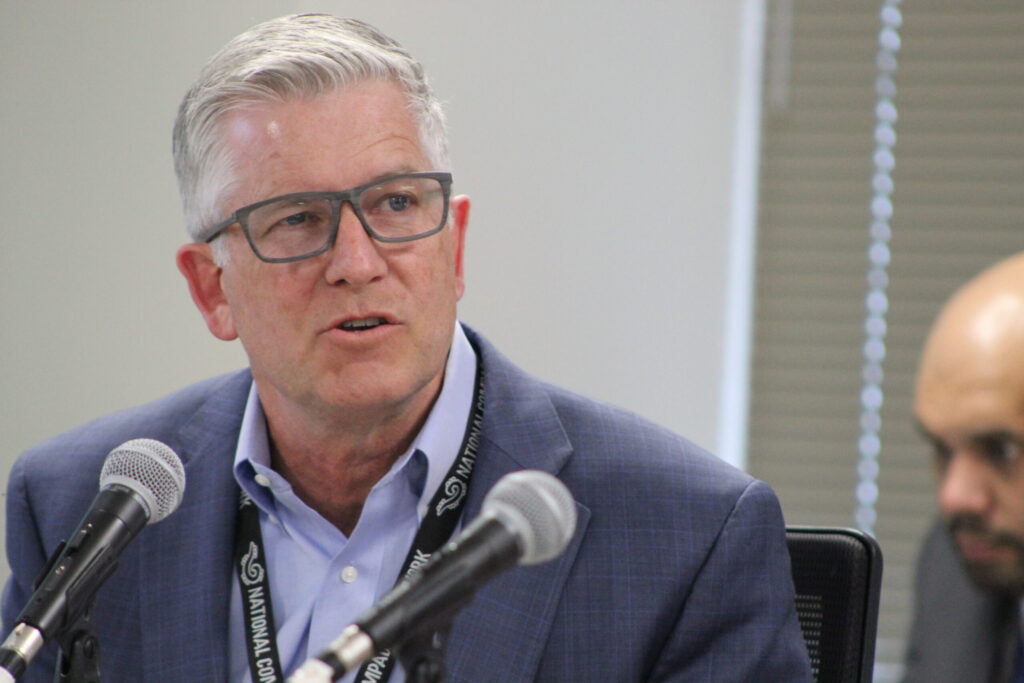CRONIN & LOEVY | Colorado’s ‘wealth belt’ eludes many

Colorado is among the dozen wealthier states, according to most census indicators such as median household income. But this masks the fact that our wealthy counties, about a dozen or so, are concentrated in Denver’s upscale suburbs and in Rocky Mountain resort communities, many on I-70 west of Denver.
A visitor to Boulder, Douglas, and Jefferson counties, or to Aspen, Vail, or Telluride, can come away dazzled by majestic homes, trophy ranches, Tesla electric automobiles, and fancy hotels and restaurants.
We all know about the Sun Belt and the Bible Belt. Well, there is a Wealth Belt, or wealth corridor, that runs through about 20 percent of Colorado. It is a rectangle with Aspen and Steamboat Springs at the western edge and Boulder, Broomfield, Cherry Hills Village, and Castle Rock on the eastern edge. Colorado’s wealth is largely concentrated in this section of our state.
Yet our Eastern Plains counties, and especially our Southern Colorado counties, have thousands of households who endure hardship at finding and keeping good jobs. Other families in those two areas are suffering with below poverty level wages.
Let’s look at Southern Colorado. It has a high mountain range – the Sangre de Cristo Mountains to the east. It sports the beautiful scenery of a major mountain pass – La Veta Pass. It is home to a national park – Great Sand Dunes. It is one of the oldest and most historic parts of Colorado, with the state’s first successful human settlement at San Luis.
Southern Colorado is also the part of the state with counties that have the highest percentages of human poverty in Colorado. In a few cases the poverty levels rise above 20 percent. Economists and the U.S. Census differ a little about what defines living in poverty, yet the general agreement is that it refers to a family of four living on an income below around $28,000 a year.
Most but not all of these counties in Southern Colorado have Spanish names. Compared to the rest of Colorado, they have higher percentages of Hispanic citizens. They are agricultural and experiencing little population growth. Some of the counties are declining slightly in population.
We find it depressing that, in this very historic and interesting part of our state, high rates of poverty are so prevalent.
Begin with Costilla (county seat – San Luis) County. It is located on Colorado’s southern border with New Mexico in the Sangre de Cristo Mountains. Costilla is the Spanish word for “rib” and supposedly describes the rough-hewn appearance of the neighboring mountains. San Luis is the oldest city in Colorado. The percentage of people in poverty in Costilla County, according to the Census, is 24.6 percent, or almost one out of every four persons.
To put that figure in perspective, the poverty level for all of Colorado is 9.3 percent. For the United States it is 10.5 percent. In Denver 12.1 percent are in poverty. In El Paso (Colorado Springs) County, the poverty rate is 8.8 percent, only .5 (a half of a percentage point) below Colorado’s 9.3 percent.
Another important county in Southern Colorado is Conejos (Antonito) County. It is home to a tourist attraction – the Cumbres and Toltec narrow-gauge steam railroad. The poverty level is 19.9 percent, almost one person in five.
Alamosa (Alamosa) County is the center of the agriculturally productive San Luis Valley. It contains the southern portion of Great Sand Dunes National Park. A public institution of higher learning, Adams State University, is located there. The poverty figure is 19.6 percent.
A few Colorado counties with high poverty rates are found outside Southern Colorado, but not at such generally high levels. On the Front Range of Colorado, the high population corridor stretching from Pueblo County through Colorado Springs and Denver to Greeley and Fort Collins, Pueblo County has a poverty percentage of 17.8. That’s the highest on the Front Range. As previously noted, Denver’s poverty mark was 12.1 percent, less than two points above the U.S. poverty percentage of 10.5.
Off the Front Range, somewhat high poverty numbers were mainly associated with agricultural counties. On the Eastern Plains of Colorado along the Kansas border, Cheyenne (Cheyenne Wells) County registered a poverty level of 13.7 percent. Adjoining Kiowa (Eads) County reported poverty at 13.5 percent.
It was the same story for agricultural counties on the Western Slope. Delta (Delta) County had a poverty reading of 15.1 percent. Montrose (Montrose) County clocked in on poverty at 13.2 percent.
There will always be a big divide between Colorado’s prosperous counties and our poorer counties. This hasn’t changed in recent decades. We doubt that government redistributive policies, such as food stamps and Coronavirus stimulus checks and the recently expanded Child Tax Credit, will make a big difference. They do, however, make some difference.
Colorado political and business leaders can be proud of all the economic improvements being made in the Centennial State. Yet we have to remember that our state will be judged by how it treats and provides for the least advantaged. We have to have both public and private organizations dedicated to encouraging equal economic opportunity, especially for young people seeking jobs and a living wage.
We have to ask whether all is well in a state which has counties that average four and five times the median household incomes of people who live just a few counties away. About one in nine Coloradans are poor. It is no surprise that many of them are children living with a single parent. First rate educational opportunities offered throughout the state are the obvious first need. But much more will be needed.
Tom Cronin and Bob Loevy write on Colorado and national issues. The were longtime political science professors at Colorado College in Colorado Springs.
Colorado Politics Must-Reads:













